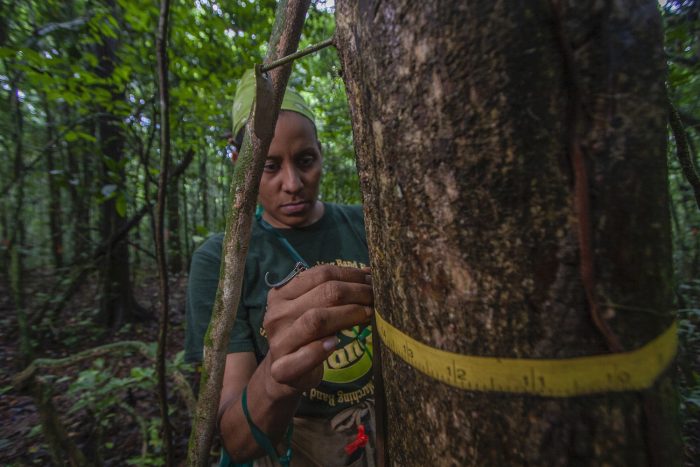
A tree is measured to collect data on Barro Colorado Island in Panama. (Christian Ziegler)
Protecting Tropical Forests by Predicting their Growth
Forests in the tropics are being rapidly cleared for agricultural use, and their loss comes at a steep price. These forests not only provide the habitat for an exceptionally diverse array of species, but also mitigate climate change by capturing atmospheric carbon dioxide.
An international team of researchers and collaborators, including UF Associate Professor of Biology JEREMY LICHSTEIN, are finding new ways to support the recovery of these essential ecosystems. In research published in the journal Science, the researchers have developed digital models that predict how forests grow so they can be effectively restored.
“Planning forest restoration projects relies on accurate information on how the recovering forest will change over time in terms of biodiversity, carbon storage, and other ecosystem services,” said Lichstein, who contributed to interpreting the results of the study and writing the paper.
Similar to investors who want to know the likely return before investing their money, organizations that are buying, protecting, and reforesting degraded lands want information on the expected future state of the forest, Lichstein explained. The paper shows how this type of analysis can be done with widely available forestry data.
Using data recorded over the last 40 years about 282 tree species in a tropical rainforest in Panama, the researchers identified how different types of trees develop in varying ways, with factors including lifespan, number of offspring, stature and more.
From there, they created a computer model that replicates how trees grow, die, reproduce and compete for light in a real forest, allowing different configurations of the model to compete against each other. They then compared their simulations to observations of actual regrown forests.
This high-tech modeling makes the prediction of forest growth easier and more efficient. Once cleared land is no longer in use, these simulations can be used to more effectively manage the regrowth of forests in real life, thereby preserving biodiversity and continuing to mitigate climate change.
“Our new understanding of ecological tradeoffs among different tropical tree species led to a simple but accurate means of representing tropical tree diversity in a computer model,” Lichstein said.
The research was led by Nadja Rüger, junior research group leader at the German Centre for Integrative Biodiversity Research and the University of Leipzig.
Read about the research in The Guardian, or ready the full study here.


